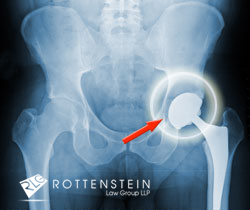Hip pain can be very difficult to deal with on a day-to-day basis, and traditionally requires long-term pain management if the patient does not undergo hip surgery, orthopaedic experts say. Hip replacement surgery and hip resurfacing are often the only medical options presented to patients to deal with their debilitating pain. Although hip replacement surgery is very effective at reducing pain and improving function for those afflicted with various types of hip injuries, there are several non-invasive types of treatments available designed to manage a chronic hip pain condition and prevent and/or postpone the need for hip replacement surgery.
There are types of
alternatives for hip surgery to avoid post-operation effects which are tried and effective to relief pain and postpone the surgery.
Activity Adjustments Reducing participation in those extensive physical activities that worsen hip pain is an effective alternative to hip replacement surgery. Avoiding extraneous activities such as running, fast walking, aerobics and so on, and embracing low-impact physical activities into daily life such as swimming, cycling, slow walking and so on, can go a long way towards reducing hip pain and stiffness and increasing hip joint function. It can also help prevent and/or delay the need for hip replacement surgery.
Hip Injections Hip injection is often an option to treat torturous hip pains that doesn’t react to pharmacological treatment. A minimal amount of cortisone is used to inject directly into the hip joint to somewhat reduce inflammation and pain in the hip joint. Hip joint injections can potentially offer pain relief and improve hip function to patients with limited activities because of severe hip pains.
Hip Reconstruction In some cases, hip reconstruction can be an applicable option to hip replacement surgery. It reconstructs and repairs rather than replacing the damaged hip joint. Hip reconstruction surgery involves making cuts to the bones about the hip joint, which allows the hip joint anatomy to be reconstructed, fixed and shifted into a more anatomically correct positioning. As a result, it reduces hip pain, increase joint function and in many cases, prolonging the life of the natural hip joint.
Not all hip conditions require a hip replacement surgery as the initial treatment. Unfortunately for those who have undergone hip replacement procedures, instead a hip replacement will bring them relief and comfort, they are suffering the effects of the surgery. In light with the hip replacement surgery, you can learn more information at
DePuy Pinnacle Lawsuit Information Center.
URL References:orthopedics.about.com/od/hipkneereplacement/a/hipalternatives.htm
ehow.com/way_5266745_alternative-hip-replacement.html




 RSS Feed
RSS Feed